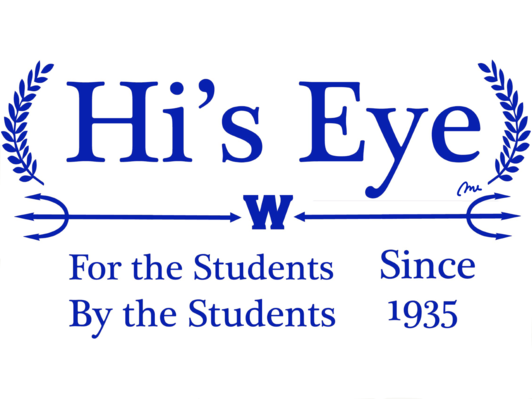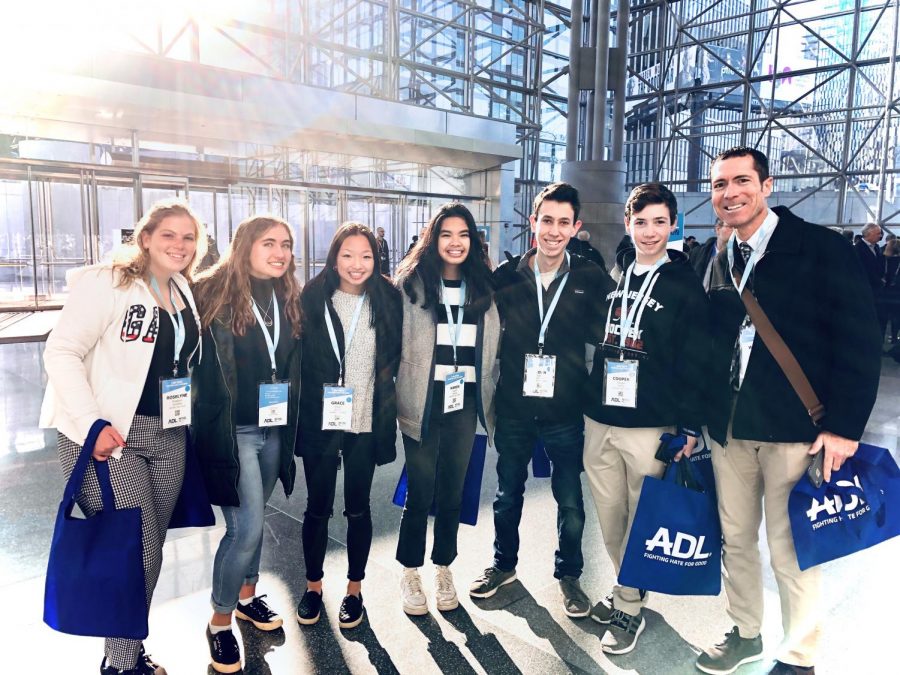Looking in from the outside
How I, a Catholic, learned about anti-Semitism and hate
Photo Grace Sacco
Grace Sacco with WHS students and Assistant Principal Warren Hynes at The Never is Now Summit
WHS has recently been making strong efforts to understand and embrace our school’s diversity. When the opportunity to attend an annual convention about hate and biases was presented to me, I knew I wanted to be involved.
The Never is Now Summit focuses on understanding and preventing anti-Semitism and bigotry. Minority groups act as guest speakers and there were breakout sessions for students and educators. I attended the event in New York City hosted by the Anti-Defamation League, which WHS has been working closely with.
Before the convention, we were asked to sign up for two panel discussions where we would hear from a handful of different experts and leaders. I attended discussions about communal responses to anti-Semitism and the effects of anti-Semitism on college campuses.
When signing up for these discussions, I thought I would be engaged in history lessons and learn about significant events in the Jewish community. I didn’t think I would be able to make any of the information applicable to my own life because of the religious differences. I am not Jewish, but I am now much more worried and scared about hate crimes after learning about the anti-Semitism that surrounds me.
While I have been taught about anti-Semitism throughout history, at the convention I was hit with the painful realization that in today’s society anti-Semitism has an impact on everyone. I learned how anti-Semitism is a form of hate, and hate crimes do not discrimate. Any religious background or ethnic group is affected even if they are not the target, and any religious background or ethnic group could be at risk in any given environment.
After the panel discussions, the students attended a breakout session. We were encouraged to sit with people we have not met before. I was in a group of 15 students and one teacher — and I was the only member who was not Jewish. At first, I felt like an outsider as the group talked about their trips to Israel and Jewish private schools, but this feeling quickly evaporated.
The purpose of the breakout session was to delve deep into ADL’s pyramid of hate and create solutions for stopping hate before it escalates to the worst stage. My group members and I were able to share our own personal experiences of how we have seen or been personally affected by the first stages of hate, biased attitudes and acts of bias.
I was educated by other students about the current issues the Jewish community is facing, but I also realized how biases and discrimination hurt different religious or ethnic groups in a similar way. I was able to relate my own stereotypes of being an Asian who is Catholic to others who are American and Jewish.
Meeting with other students who are unlike me was the most eye-opening part of my day. After hearing about discrimination and biases that kids my age have faced, it made me further recognize the importance of stopping hate in my school and community by working with others unlike myself. Instead of putting our differences aside and trying to think through one identity, we embraced all of our differences to grasp an understanding of how hate hurts people the same way.
As I get ready to attend college next year with thousands of new faces and various backgrounds, I will be encouraging myself to challenge biases and prejudices by using what I learned from attending ADL’s convention. Never is Now has shown me the importance of understanding and becoming allies with those who are different from you to prevent hatred that we are all affected by.

